No Mandevilla Flowers: Getting A Mandevilla Plant To Bloom
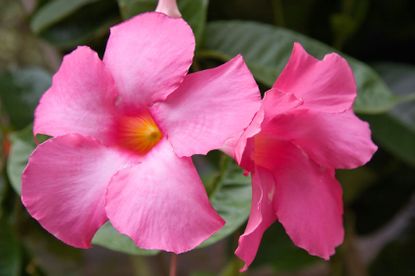

Vibrant, pink blooms and elegant, vining stems characterize the mandevilla plant. Getting a mandevilla plant to bloom in tropical to sub-tropical regions relies upon plenty of water and adequate sunshine. In cooler climates, the plant is only suitable for summer outdoor growing and may need a bit more babying as the season is short and the vines need to mature before blooming. There are a few tricks you can try if there are no mandevilla flowers on your plant. Mandevilla plants need nighttime temperatures of around 60 F. (15 C.) to force blooming. They cannot tolerate cooler temperatures of less than 40 F. (4 C.) and an outright freeze will kill the vine. Northern gardeners who wonder, “Why won't my mandevilla bloom?” may be in for some serious work to encourage this tropical wonder to brighten their landscape.
Why Won't My Mandevilla Bloom?
Mandevilla are heavy bloomers in the right conditions. You can even prune them to the ground in late winter or early spring, and the plant will grow back quickly and reward you with the astounding blooms on the new vines. If there are no mandevilla flowers on your plant, the cause could be cultural, improper site conditions, or temperatures that are too cool. Established plants that are mature will provide the best color display, so don't give up on young plants. They may simply need more time to bring out their flower show.
Cultural Reasons for a Mandevilla Not Flowering
These lovely plants need well-drained soil with plenty of humus added. Indoor plants thrive in a mixture of peat, potting soil, and fine sand. Potted plants should be fertilized every two weeks with high phosphorus plant food from spring through summer. Feed outdoor plants with a time-release bloom food in early spring. Avoid high nitrogen plant foods, as they fuel leaf and vine growth but do not promote flowers. Provide a support for the vines so the buds can receive plenty of sunlight. Temperatures cannot be too warm but situate the plants where there is protection from the searing heat during the hottest part of the day. Keep the fast-growing vine deeply watered but not soggy. Following these guidelines will generally prevent a mandevilla from not flowering.
Getting a Mandevilla Plant to Bloom
If you followed correct cultural care and siting, there is little reason a mandevilla plant does not bloom. However, in the rare cases where your vine just simply won't produce, you can force it to flower. Use a teaspoon (5 ml.) of Epsom salts dissolved in water once every two weeks for a month. The salt content will build up in the soil if you try this for any longer. The magnesium in the Epsom salts should get it flowering again. In potted plants, leach the soil with plenty of water after trying this treatment. Additionally, a mandevilla plant does not bloom if it hasn't been trained correctly. In young plants, pinch off the new growth to promote side shoots. Mandevilla bloom off of new growth so this may be just the trick to get new vines and enhance blooming.
Gardening tips, videos, info and more delivered right to your inbox!
Sign up for the Gardening Know How newsletter today and receive a free download of our DIY eBook "Bring Your Garden Indoors: 13 DIY Projects For Fall And Winter".

Bonnie Grant is a professional landscaper with a Certification in Urban Gardening. She has been gardening and writing for 15 years. A former professional chef, she has a passion for edible landscaping.
-
 Elegant Exotics: 8 Beautiful Amaryllis Varieties That Will Brighten Any Holiday Display
Elegant Exotics: 8 Beautiful Amaryllis Varieties That Will Brighten Any Holiday DisplayWhether red, pink, white or variegated, the right amaryllis varieties can enhance any living space, especially during the holidays. We round up eight of the most exquisite
By Bonnie L. Grant
-
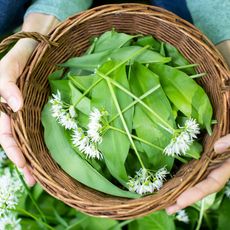 Forage For Herbs: 7 Tasty And Safe Wild Herbs To Pick Close To Your Own Backyard
Forage For Herbs: 7 Tasty And Safe Wild Herbs To Pick Close To Your Own BackyardIn addition to growing your own herbal staples, did you know there are several wild options out there that are safe and tasty – and free? Try foraging these 7 wild herbs
By Amy Grant
-
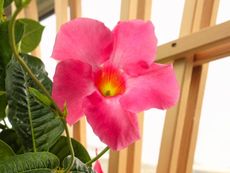 How Much Light Does A Mandevilla Need Indoors?
How Much Light Does A Mandevilla Need Indoors?You can overwinter a beautiful mandevilla indoors, but it has special lighting needs. Read on to learn more about it.
By Amy Grant
-
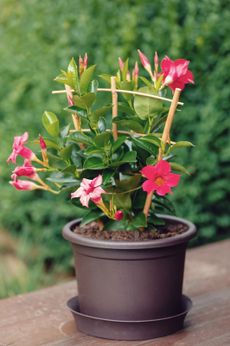 Repotting Mandevilla Plants: Learn How To Repot Mandevilla Flowers
Repotting Mandevilla Plants: Learn How To Repot Mandevilla FlowersMandevilla is a reliable flowering vine with stunning, trumpet-shaped blooms. In cooler climates, it is grown as an indoor plant. Occasional repotting is necessary to keep the plant healthy and repotting mandevilla isn’t difficult. This article will help.
By Mary H. Dyer
-
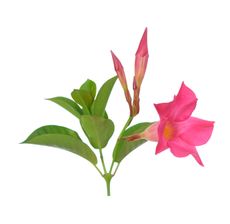 Dipladenia Cutting Propagation – How To Root Dipladenia Cuttings
Dipladenia Cutting Propagation – How To Root Dipladenia CuttingsDipladenia is a tropical vining plant similar to Mandevilla. Many gardeners grow these vines from cuttings to grace a garden bed or patio. Perhaps, you are interested in growing this lovely vine for yourself. For tips on how to root Dipladenia cuttings, click this article.
By Teo Spengler
-
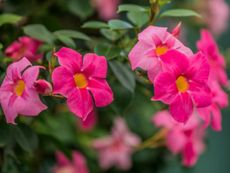 Mandevilla Plant Tubers: Propagating Mandevilla From Tubers
Mandevilla Plant Tubers: Propagating Mandevilla From TubersThere are several easy ways to start a new mandevilla plant, including seeds and softwood cuttings, but propagating mandevilla from tubers probably isn?t a viable method of propagation. Click here to learn more about mandevilla plant tubers.
By Mary H. Dyer
-
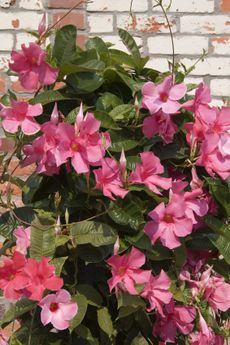 Should I Cut Back Mandevilla – When To Prune Mandevilla Vines
Should I Cut Back Mandevilla – When To Prune Mandevilla VinesIf allowed to grow untended, mandevilla can start to get an unkempt appearance and not flower as much. This is why pruning mandevilla vines at least once per year is recommended. Learn more about how to cut back a mandevilla in this article.
By Liz Baessler
-
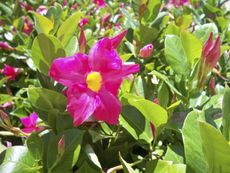 Mandevilla Ground Cover – How To Use Mandevilla Vines For Ground Covers
Mandevilla Ground Cover – How To Use Mandevilla Vines For Ground CoversA mandevilla vine can scramble over a slope as fast as it can climb a trellis, especially in areas where it is difficult to plant grass. Read this article for information about using mandevilla vines for ground covers.
By Teo Spengler
-
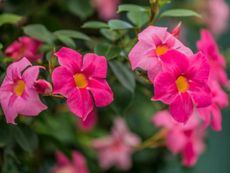 Mandevilla Blooming Season: How Long Do Mandevillas Flower
Mandevilla Blooming Season: How Long Do Mandevillas FlowerWhen does mandevilla vine bloom? How long do mandevillas flower? All good questions, and the answers depend on a number of factors. Read this article for specific information about the mandevilla blooming season. Click here to learn more.
By Mary H. Dyer
-
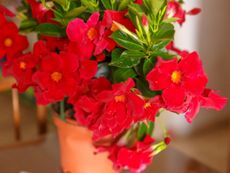 Winterizing Mandevillas: Tips For Overwintering A Mandevilla Vine
Winterizing Mandevillas: Tips For Overwintering A Mandevilla VineIf you live in a more northern climate, planting mandevilla in a container is the best way to go. Click this article for tips on winterizing mandevillas.
By Mary H. Dyer